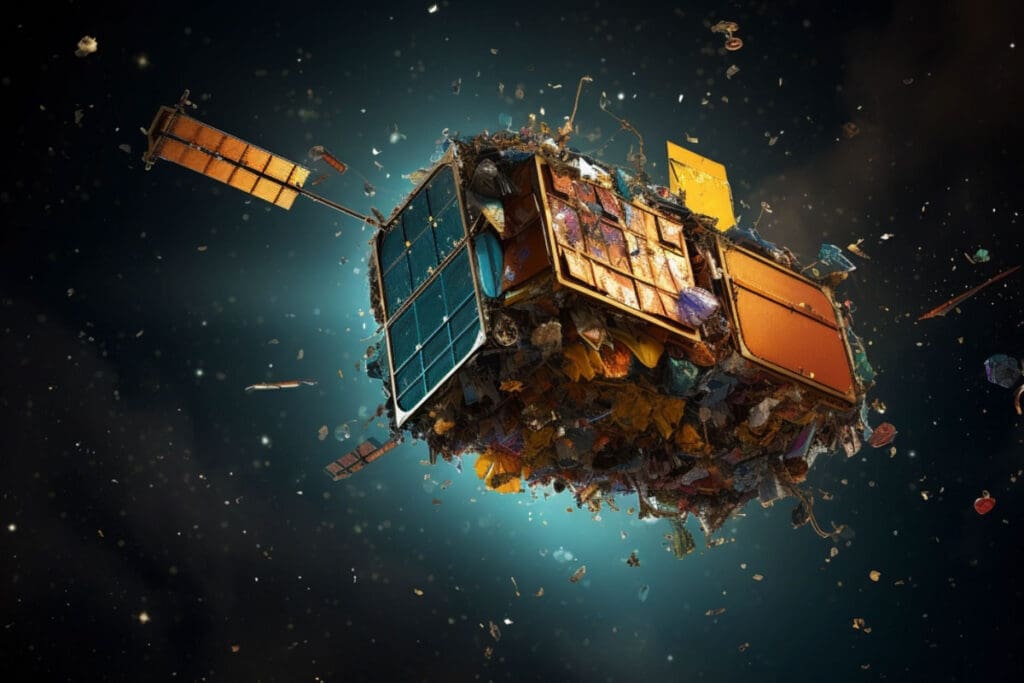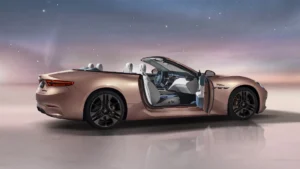Currently, more than 100 trillion untracked pieces of old satellites are already in orbit, weighing 93 million tons, according to the European Space Agency (ESA). That’s not a small number, and it has lead — in part — to NASA’s latest endeavor. Launching a wooden satellite.
According to the latest statistics of the Index of Objects Launched into Outer Space, maintained by the United Nations Office for Outer Space Affairs (UNOOSA), there were 11,330 individual satellites orbiting Earth at the end of June 2023. The increase in number of operational satellites in orbit since January 2022 has risen by 37.94%.

The Clean Up Effort
In the coming years, the number of satellites to be launched is suspected to increase dramatically, adding to the problem of space junk and pollution of the Earth’s atmosphere. Estimates suggest an average of 2,500 satellites will be launched each year from 2023 to 2031.
Read More: Space is Getting High-Speed Internet
“We are very concerned with the fact that all the satellites which re-enter the Earth’s atmosphere burn and create tiny alumina particles, which will float in the upper atmosphere for many years,” Takao Doi, a Japanese astronaut and aerospace engineer with Kyoto University, told the BBC in 2020. “Eventually, it will affect the environment of the Earth.”
The National Oceanic Atmospheric Administration recently completed a study on the aerosol particles being released into Earth’s atmosphere. Aluminum and exotic metals from rockets and satellites are present in about 10 percent of the aerosol particles in the stratosphere.
This is concerning because of the number of satellites projected to be launched into low Earth orbit in the coming years. Researchers estimate that the aerosol particles from metals in the stratosphere could grow from 10 to 50 percent. Researchers cautioned that these particles may cause damage to the Earth’s ozone layer.
Additional Dangers from Space Junk
There is more serious harm besides the pollution and potential harm metal satellites can cause when they reenter Earth’s atmosphere. Debris from metal satellites are a serious threat to other satellites and spacecraft, according to the European Space Agency (ESA).
For example, a collision with a one-millimeter piece of space junk could destroy sub-systems on board a spacecraft. A one-centimeter object would most likely disable a spacecraft. It could penetrate the shields of the International Space Station (ISS). A collision with a ten-centimeter object would cause a catastrophic fragmentation of the typical satellite.
What makes even small pieces of space junk particularly hazardous is the speed at which the debris travels. It is estimated that orbital debris can reach speeds of more than nine miles per second. Such speed is over ten times as fast as a bullet, according to NASA.
Metal satellites also have additional problems beyond the dangerous junk they leave behind. Defunct satellites and spent rocket stages are typically made of shiny metals. They have been found to be a big contributor to light pollution. It is estimated that shiny metals in space increase the brightness of the night sky by at least ten percent over natural light levels, Live Science reported.
Cost is another consideration, as metal spacecraft are more expensive to manufacture.
Wooden Satellites to Reduce Space Junk and Atmospheric Pollution
NASA and Japan are joining together to reduce the rising amount of junk in space. They also want to reduce the amount of particles released into Earth’s atmosphere by satellites upon reentry.
Scientists from NASA and the Japan Aerospace Exploration Agency (JAXA) are collaborating on a project dubbed LignoSat, which will be the world’s first wooden satellite launched into Earth’s orbit. The launch is scheduled for summer 2024.
Engineers and scientists have developed a miniature, biodegradable spacecraft that is made out of wood. The purpose is a satellite that will incinerate upon its reentry into Earth’s atmosphere. Thus, reducing space debris.
When researchers say that this will be a small satellite, they aren’t exaggerating. LignoSat is about the size of a coffee cup.
Can Wood Weather the Storms of Space?
In 2020, Japanese researchers launched the LignoStella Space Wood Project. The purpose was to test the durability of three different types of wood in space. Researchers used Erman’s birch, Japanese cherry, and magnolia bovate. The woods were exposed to the harsh conditions of space for more than 290 days on the International Space Station (ISS). The samples were returned to Earth earlier this year.
The team of NASA and JAXA scientists ultimately settled on the use of magnolia. This was more resilient in extreme space conditions.
“These wood specimens were tested and showed no deformation after space exposure,” researchers said in a statement in May, Chron reported. “Despite the extreme environment of outer space involving significant temperature changes and exposure to intense cosmic rays and dangerous solar particles for ten months, tests confirmed no decomposition or deformations, such as cracking, warping, peeling, or surface damage.”
“When you use wood on Earth, you have the problems of burning, rotting, and deformation,” Koji Murata, a researcher at Kyoto University, told CNN. “But in space, you don’t have those problems. There is no oxygen in space, so it doesn’t burn. And no living creatures live in them, so they don’t rot.”
After the launch, scientists plan to monitor the wooden Satellite for at least six months to study how it performs in space conditions.
Read More: What Does Space Smell Like? You Might Not Want to Know
Both Teams Will Monitor
The team from both space agencies will monitor the satellite’s response to magnetic fields and radio waves.
Researchers are hopeful that wood will become a viable alternative to the use of metal and the issue of increasing space debris.
“At the end of their life, satellites re-enter the atmosphere,” Murata said. “The difference is the wood in the LignoSat will burn up and eventually become a gas, whereas metals become fine particles instead.”
“It is a renewable, environmentally friendly, and people-friendly material,” Murata added. “I think wood could be used in space development, particularly as an interior material and for radiation shielding material, for small satellites and manned space vehicles.”
Read More: 4.5-Billion-Year-Old Space Rocks Dropped Off by Mother Ship — What NASA Hopes to Learn









